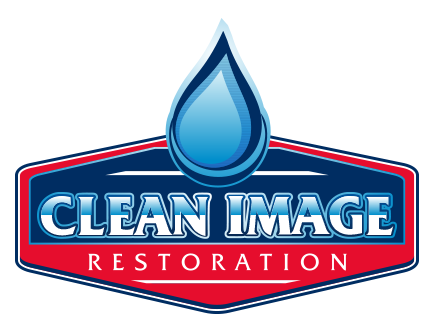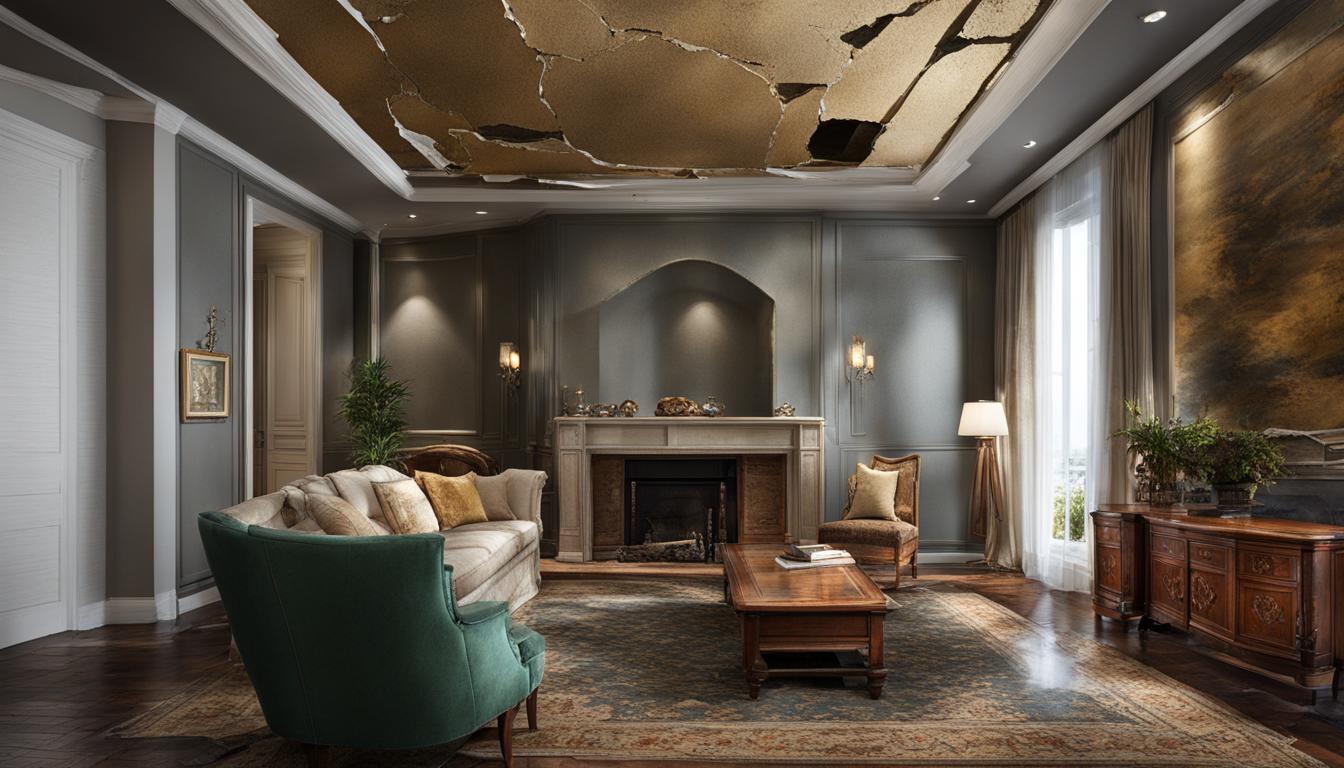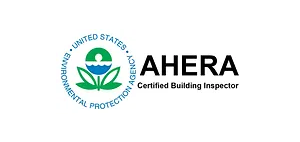Water damage can be a devastating experience for any homeowner or business owner. Floods, burst pipes, and other water-related issues can lead to property damage, health hazards, and potentially permanent harm to your building’s structural integrity. But how do you know if water damage is permanent? What are the signs of irreversible harm, and how can you assess the severity of water damage to your property? In this section, we will explore the concept of water damage and provide you with valuable insights to help you determine if your property suffers from permanent water damage.
Key Takeaways
- Water damage can be permanent if left untreated, resulting in costly repairs and safety hazards.
- Signs of permanent damage include persistent musty odors, mold growth, and structural issues.
- Assessing water damage involves examining the affected areas for visible damage and checking for hidden damage using specialized tools.
- Quick action and proper cleanup can prevent water damage from becoming permanent.
- You may need professional assistance to repair water damage and ensure that it does not become a recurring issue.
Understanding Water Damage
Water damage can have devastating effects on both residential and commercial properties. Understanding the causes and types of water damage can help you take necessary measures to prevent it from occurring or getting worse.
There are various causes of water damage such as:
- Leaking or burst pipes
- Flooding due to heavy rain or storms
- Roof leaks
- Malfunctioning household appliances such as washing machines, hot water heaters, and dishwashers
- Overflowing toilets or sinks
Water damage can be classified into three categories:
| Category | Description |
|---|---|
| Category 1 | Water is from a clean source and does not pose a health risk |
| Category 2 | Water is contaminated and may cause illness or discomfort |
| Category 3 | Water is highly contaminated and can cause severe illness or death if ingested |
It’s worth noting that water damage can be a slow and gradual process that may not be immediately visible. Signs of water damage can be subtle, such as water stains or a musty odor. Therefore, if you suspect water damage, it’s crucial to investigate the cause and extent of the damage thoroughly.
Signs of Permanent Water Damage
It’s important to recognize the signs that indicate permanent water damage, as they can help you determine the severity of the issue and take appropriate action. Some of the most common signs of permanent water damage include:
- Mold Growth: Mold thrives in damp environments, so it’s often a sign that water damage has occurred. If you notice mold growth on surfaces or a musty smell in the air, it could be a sign of permanent water damage.
- Structural Issues: Water damage can weaken the structural integrity of your property over time. You may notice cracks in the walls, sagging ceilings or floors, or even bowing in the walls.
- Discoloration: Dark spots or patches on walls, floors, or ceilings that continue to spread, even after they have been cleaned, indicate permanent water damage.
- Persistent Musty Odors: The dampness from water damage can cause a musty smell that lingers. Even after cleaning, this odor is persistent and can be a sign of permanent damage.
When you notice any of these signs, it’s crucial to have the damage assessed by a professional. Continuing to use the affected area can exacerbate the damage and lead to more costly repairs down the line.
Assessing Water Damage
When it comes to water damage, assessing the extent of the damage is crucial. By evaluating water damage carefully, you can determine the level of restoration work that may be needed. Here is a step-by-step guide to help you assess the severity of the damage:
- Examine the affected areas – Check for visible signs of water damage, such as discoloration, warping, or sagging. Look for stains or spots that may indicate water damage.
- Check for hidden damage – Remember to inspect behind walls, beneath the flooring, and other out-of-sight areas, where water could seep through and cause damage that might not be immediately noticeable.
- Take note of the affected materials – Different materials react differently to water, so it’s essential to evaluate each one. For instance, wooden surfaces may warp, while metal could rust. Write a list of the materials affected and their condition.
- Monitor the moisture levels – Use a moisture meter to measure the level of moisture in the air and on surfaces. High humidity levels can promote mold growth, which can escalate the damage.
- Consult professionals – If you’re unsure or have a large area of damage, consult a professional restoration company. They have the expertise and equipment to evaluate the extent of the damage and provide an estimate for repairs.
Evaluating water damage is essential to ensure that you address the problem promptly and reduce potential long-term consequences. Remember that some water damage can be difficult to evaluate, so it’s always better to be safe than sorry.
Note: Proper evaluation of the water damage is the key to effective restoration.
Repairing Water Damage
When facing water damage, it’s essential to repair and mitigate the effects as soon as possible. While water damage can be permanent, there are ways to minimize the harm and restore your property. Restoration typically involves a three-step process: cleaning, drying, and repair.
Cleaning the affected areas is the first step in the restoration process. This involves removing any water or debris, disinfecting the surfaces, and preventing mold and mildew growth. Specialized equipment may be used to remove water and moisture from carpets, floors, and walls to prevent further damage.
Drying techniques are crucial in preventing any residual damage and mold growth. Technicians may use air movers and dehumidifiers to ensure that moisture is fully removed from the affected areas. Effective drying can also prevent structural damage, such as warping or buckling.
Structural repairs may be necessary depending on the extent of the damage. This can include replacing damaged drywall, insulation, and flooring, or even rebuilding parts of the structure.
It’s important to note that attempting water damage cleanup and restoration on your own can result in further damage or even health hazards. It’s best to hire professionals to handle the restoration process.
When choosing restoration professionals, look for companies that specialize in water damage cleanup and have experience in your type of property. They should be certified and insured, and offer a detailed plan of the restoration process.
Restoring your property after water damage can be a daunting task, but with the help of professionals, you can mitigate the damage and get your property back to its pre-damaged state.
Preventing Water Damage
To avoid the stress and inconvenience of dealing with water damage, taking preventative measures is crucial. By incorporating simple practices into your routine, you can significantly reduce the risk of water damage in your home or workplace. Here are some practical water damage prevention tips:
- Regular maintenance: Keeping up with routine maintenance tasks such as cleaning gutters, checking pipes for leaks, and inspecting appliances can help prevent water damage and catch potential issues before they worsen.
- Proper insulation: Proper insulation can prevent pipes from freezing and bursting, which is a common cause of water damage during colder months. Ensure that all pipes and water systems are adequately insulated.
- Install water detection systems: Installing water detection systems can help you identify leaks and other issues before significant damage occurs. These systems send alerts to your phone or a monitoring company if they detect water, allowing you to take quick action.
- Be mindful when landscaping: Properly directing rainwater away from your home or workplace can reduce the risk of water damage. Ensure that your landscaping is graded away from your property’s foundation, and consider using water-resistant materials.
Following these tips can go a long way in preventing water damage and preserving the structure and contents of your property. However, accidents can still happen, and it’s essential to have adequate insurance coverage in case of emergency.
To learn more about dealing with water damage and the restoration process, refer to Section 5: Repairing Water Damage.
Insurance Coverage for Water Damage
Dealing with water damage can be frustrating and expensive. Fortunately, in most cases, homeowners’ insurance policies cover water damage caused by sudden and accidental events, such as burst pipes, malfunctioning appliances, and storms. However, it’s crucial to understand your policy’s coverage limits, exclusions, and deductibles to avoid unpleasant surprises.
When filing a water damage claim, be prepared to provide detailed documentation, including photos, videos, and receipts for damaged items. This will help the insurance adjuster assess the extent of the damage and determine the appropriate compensation.
Note that some types of water damage, such as those caused by neglected maintenance or gradual wear and tear, may not be covered by insurance. Make sure to check with your insurance provider to understand the terms and conditions of your policy.
Remember that insurance coverage for water damage varies depending on the insurance company and the policy. It’s essential to read the fine print and ask questions to your insurance agent before purchasing a policy or filing a claim.
In the next section, we will discuss the process of repairing water damage and restoring your property after a water-related incident.
Conclusion
In conclusion, when dealing with water damage, it’s crucial to understand the signs of permanent damage and to evaluate the extent of the damage effectively. By detecting the indicators of irreversible harm, you can take the necessary actions to minimize the impact on your property. However, it’s equally important to take proactive measures to prevent water damage from occurring in the first place.
If you do experience water damage, it’s crucial to hire experienced professionals to address and repair the damage effectively. The restoration process may involve drying techniques, mold remediation, and structural repairs, among other techniques.
Insurance coverage can also play a significant role in dealing with water damage, so it’s essential to review your policy and documentation requirements to ensure a smooth claims process.
Overall, knowing how to recognize, assess and repair water damage, along with proactive prevention measures, can help you protect your property from permanent harm. Remember, enlisting the help of professionals and having adequate insurance coverage can be essential when dealing with water damage.
FAQ
Is water damage permanent?
Water damage can be permanent, especially if not addressed promptly. Certain signs indicate permanent damage, such as mold growth, structural issues, discoloration, and persistent musty odors.
What are the signs of permanent water damage?
Signs of permanent water damage include mold growth, structural issues, discoloration, and persistent musty odors. These indicators suggest that the damage may be irreversible.
How do I assess the severity of water damage?
To assess water damage, examine the affected areas, check for hidden damage, and consult professionals if necessary. A proper assessment is crucial to determine the extent of the damage.
How can water damage be repaired?
Water damage can often be repaired through restoration processes. Common methods include drying techniques, mold remediation, and structural repairs. Hiring professionals is important for an effective repair process.
How can I prevent water damage?
To prevent water damage, regularly maintain your property, ensure proper insulation, and consider installing water detection systems. Taking proactive measures is key to minimizing the chances of water damage.
What does insurance typically cover for water damage?
Homeowners’ insurance policies often cover water damage caused by sudden and accidental incidents, such as burst pipes or appliance malfunctions. It’s important to understand your policy and document the damage for a successful claim.
What is the importance of documentation in water damage insurance claims?
Documentation is crucial for water damage insurance claims. Keep records of the damage, take photographs or videos, and document any expenses related to repairs. This documentation will help facilitate the claims process.






